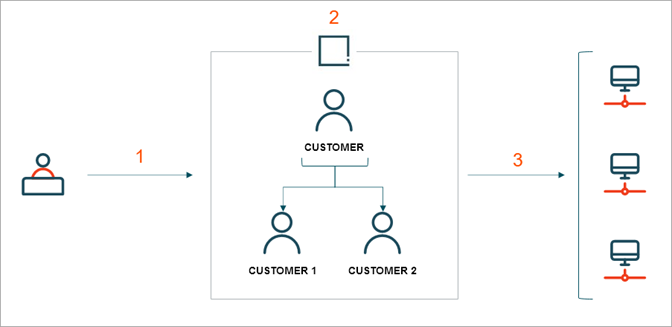In these use cases, the data steward Stew is responsible for the unmerge of entity records within different scenarios.
Simple Unmerge
ACME continues to operate with source systems feeding new entity records and updates into their MDM system. During this time, Stew continually reviews and merges or rejects potential duplicates as needed. ACME’s call center receives a complaint from an existing customer stating that their order never arrived at their shipping address. Stew has been asked to investigate to deduce why the order never arrived. In Web UI, Stew searches and finds the associated record. Based on revision date, Stew can tell that the customer has been recently updated and notices that it has two source record IDs associated with their records. Stew navigates to the source traceability tab and notices that all the address attributes were taken from one source record and the last edited date matches this source system's merging date. This tracing leads Stew to believe that another customer may have been incorrectly merged causing the shipping address to be mistakenly updated.
Stew must now unmerge the two records which includes determining which attribute values belong to each newly separated golden record.
Enhanced Unmerge
Due to continued complaints, ACME has decided to implement a new workflow-based procedure to allow for employees in the call center to directly initiate unmerge requests. Stew is still responsible for handling the unmerges but will now have an easier time of monitoring and investigating the requests.
While investigating an unmerge request, Stew notices that the entity involved still has open orders with ACME. After further investigation, Stew realizes this is a valid request, and the entity record needs to be unmerged. Before doing so, Stew must verify with the ERP team to determine which orders and invoices belong to the respective records. With this information obtained, Stew can now make informed decisions to unmerge the record.
With a single golden record now becoming two separate records, the downstream systems must be notified. Within ACME’s system landscape, the MDM system will now send out two golden records to the ERP. The ERP must now handle this update by creating two new records, surviving the appropriate invoices to them, and deactivating the previously incorrect entity record. Once the records have migrated to downstream systems, Stew must now verify that they were received correctly. Stew navigates to the new records in each surrounding system and verifies the unmerged records have been accepted. Stew then submits the unmerge task as finalized.

- A call center employee submits an unmerge request.
- The request results in a single entity record splitting into two unique records.
- The two newly created accurate golden records are synced to downstream systems.